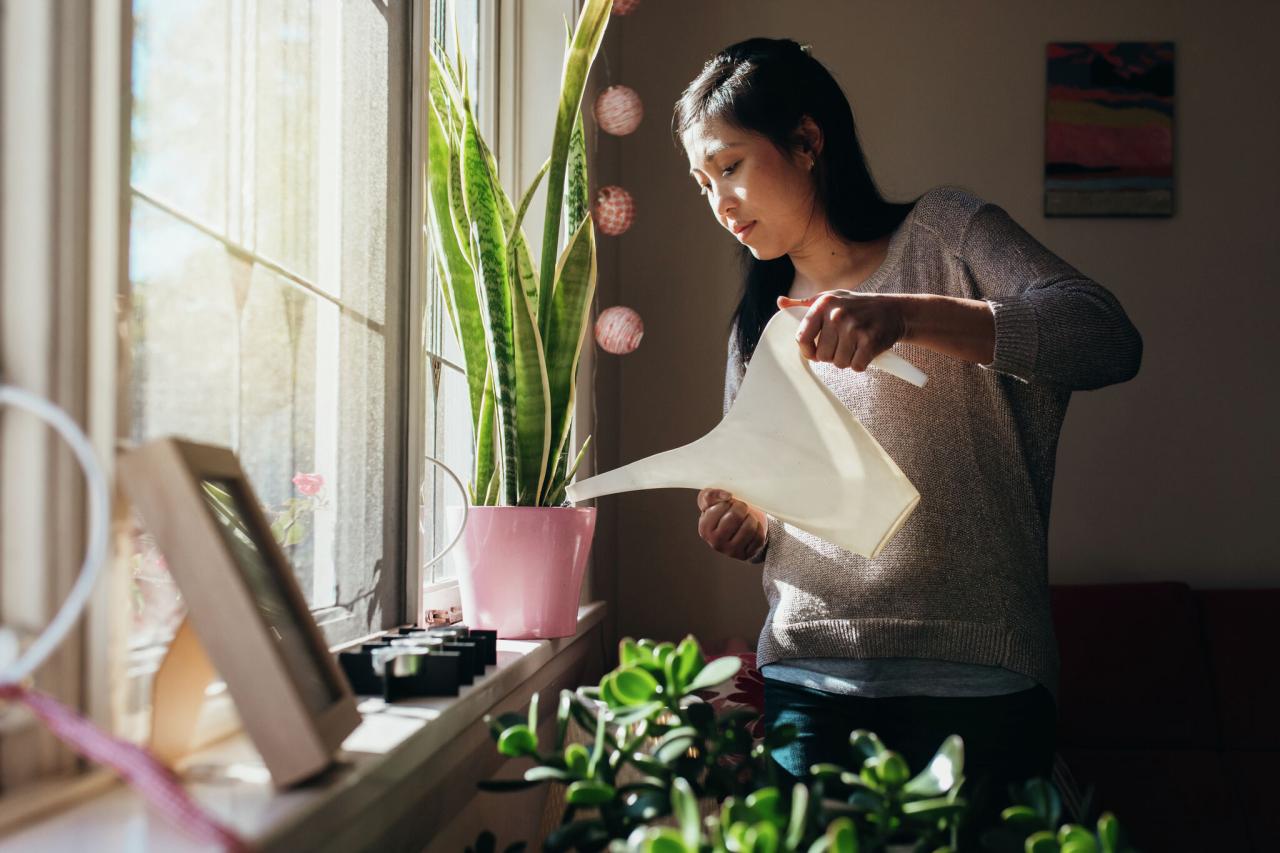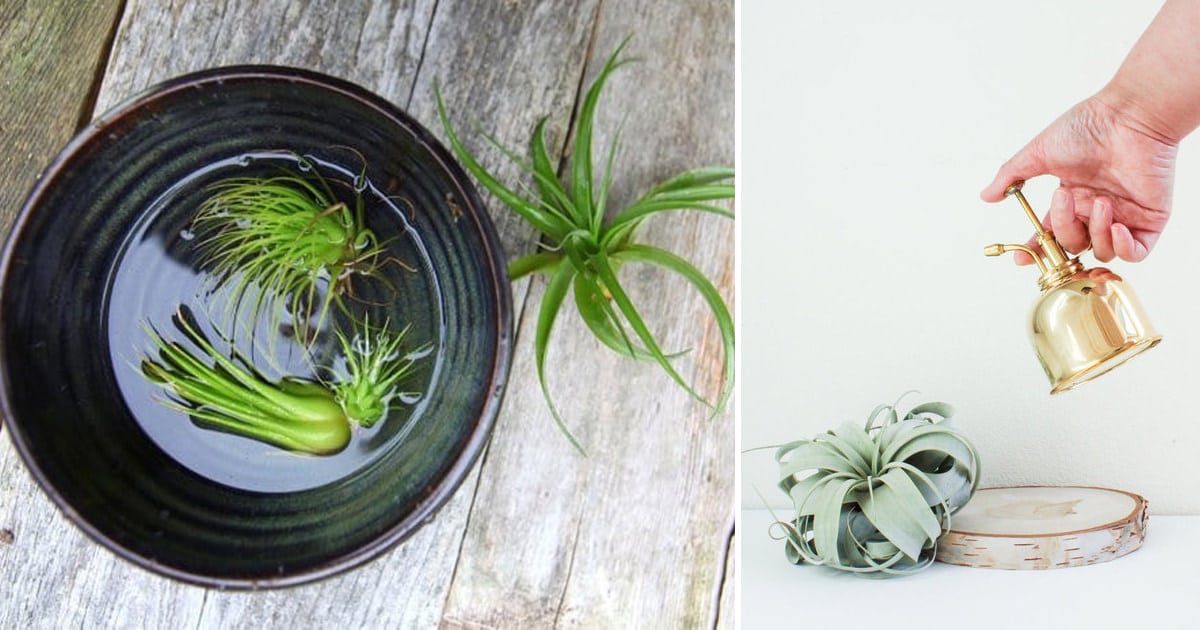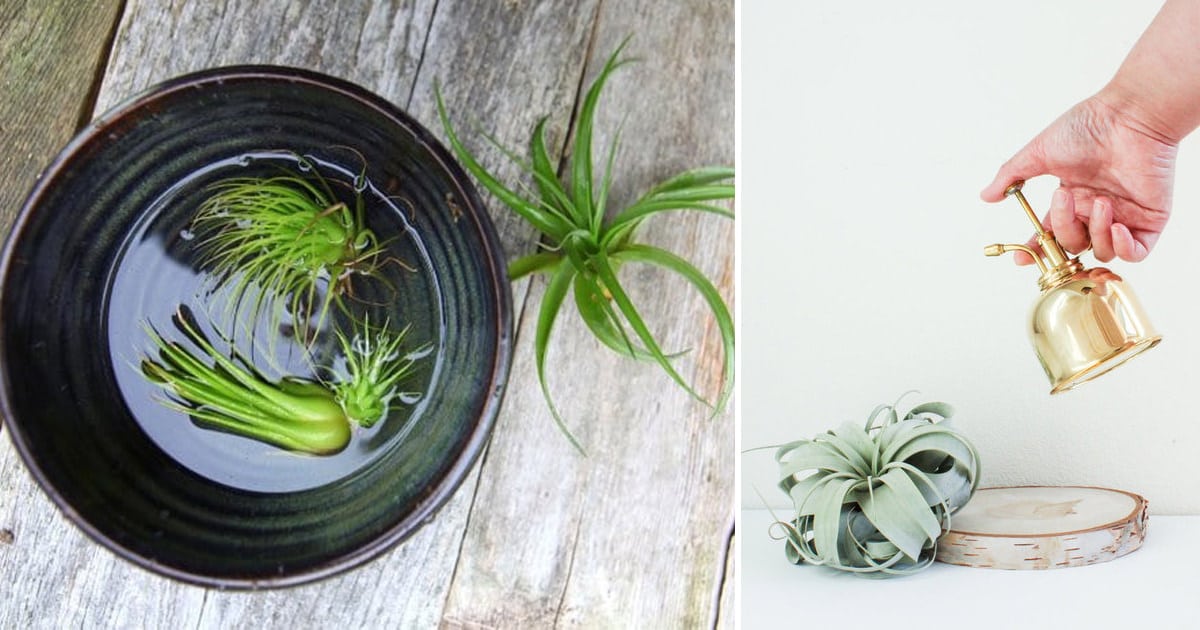The Best Time of Day to Water Air Plants is a crucial aspect of keeping these unique and captivating plants thriving. Air plants, also known as Tillandsias, are epiphytes, meaning they absorb water and nutrients from the air rather than the soil.
Their unique anatomy allows them to thrive in a variety of environments, but understanding their water needs is essential for their health and longevity.
Air plants rely on specialized structures called trichomes to absorb moisture from the air. These trichomes are tiny, hair-like structures that cover the plant’s surface, acting like miniature sponges that capture water droplets and humidity. The amount of water an air plant needs varies depending on its species, the environment it’s in, and the season.
Understanding Air Plant Watering Needs

Air plants, also known as epiphytes, are fascinating plants that obtain their nutrients and water from the air rather than soil. Unlike terrestrial plants, air plants have evolved unique adaptations to thrive in this unconventional environment.
Air Plant Water Absorption
Air plants absorb water and nutrients through specialized structures called trichomes, which cover their leaves. These trichomes are tiny, hair-like structures that act like miniature sponges, absorbing moisture from the air, rain, and even dew. The trichomes are highly absorbent, capable of holding a significant amount of water, which the plant can then utilize for its growth and development.
The Impact of Time of Day on Watering
The optimal time of day to water air plants is crucial for their health and well-being. This is because the timing of watering can significantly affect the plant’s ability to absorb water and the risk of fungal growth or rot.
Sunlight and Temperature Impact on Water Absorption and Evaporation
The amount of sunlight and temperature play a crucial role in water absorption and evaporation rates. When air plants are exposed to direct sunlight, the temperature of their leaves rises, increasing the rate of transpiration. This process involves the release of water vapor through tiny pores on the leaves, leading to increased water loss.
- Morning Watering:Watering in the morning allows air plants to absorb water before the sun’s intensity increases, reducing the risk of excessive water loss due to transpiration. The cooler temperatures and lower humidity in the morning also promote faster drying, minimizing the risk of fungal growth.
- Afternoon Watering:Watering during the hottest part of the day can lead to excessive water loss due to increased transpiration. The high temperatures can also cause the water to evaporate quickly, leaving the plant dry and potentially stressed.
- Evening Watering:While evening watering allows the plant to absorb water overnight, it can increase the risk of fungal growth or rot. This is because the plant remains wet for a longer period, creating a humid environment that favors fungal development.
Potential Risks of Watering at Specific Times of Day
Watering air plants during midday heat can be detrimental to their health. The intense sunlight and high temperatures can cause the water to evaporate rapidly, leaving the plant dry and stressed. Additionally, the heat can also scald the leaves, causing damage and discoloration.
“Watering during the hottest part of the day can lead to excessive water loss due to increased transpiration and can even cause leaf scorching.”
- Midday Heat:The high temperatures and intense sunlight during midday can lead to excessive water loss through transpiration, potentially stressing the plant. The heat can also scald the leaves, causing damage and discoloration.
- Late Evening Watering:While it may seem convenient, watering late in the evening can increase the risk of fungal growth or rot. This is because the plant remains wet for a longer period, creating a humid environment that favors fungal development.
Best Practices for Watering Air Plants
Watering air plants effectively is crucial for their health and longevity. The optimal time for watering is in the morning, allowing the plants to dry thoroughly before nightfall, minimizing the risk of fungal growth and rot. This section will delve into best practices for watering air plants, including step-by-step guides, the importance of drainage, and various watering methods.
Watering Air Plants: A Step-by-Step Guide
Watering air plants involves a few simple steps, ensuring they receive adequate moisture without becoming waterlogged.
- Choose the Right Time:As discussed earlier, morning is the ideal time to water air plants. This allows them to dry completely before evening, reducing the risk of fungal growth and rot.
- Select a Suitable Watering Method:Different watering methods are suitable for air plants, depending on the plant’s size and type. Soaking is generally preferred for larger air plants, while misting is suitable for smaller ones.
- Soaking:For soaking, fill a bowl or sink with lukewarm water and submerge the air plant completely. Allow the plant to soak for 15-30 minutes, depending on its size.
- Misting:For misting, use a spray bottle filled with lukewarm water and mist the air plant thoroughly, ensuring all its leaves are damp.
- Thorough Drainage:After soaking or misting, allow the air plant to drain completely. Gently shake off excess water or use a paper towel to pat it dry.
- Placement:After watering, place the air plant in a well-ventilated area to allow it to dry completely. Avoid placing it in direct sunlight until it is dry.
Importance of Drainage
Allowing excess water to drain from air plants is crucial for their health. When air plants are left wet for extended periods, they are susceptible to fungal growth and rot, which can damage the plant and eventually lead to its death.
Signs of Proper and Improper Watering
Watering air plants correctly is crucial for their health and vitality. By understanding the signs of proper and improper watering, you can ensure your air plants thrive.
While the best time to water air plants is generally in the morning, allowing them to dry out before nightfall, overwatering can lead to issues. Excess moisture can attract pesky gnats, which are drawn to damp soil and decaying organic matter.
If you’re dealing with a gnat infestation, be sure to check out Why Gnats Infest Plants and How to Get Rid of Them for effective solutions. Once you’ve tackled the gnat problem, you can return to your regular air plant watering routine, ensuring they receive adequate moisture without becoming overly saturated.
Healthy, Well-Hydrated Air Plants
Healthy, well-hydrated air plants exhibit several distinct characteristics. Their leaves will be firm, plump, and have a vibrant, healthy color. They will feel slightly damp to the touch, indicating sufficient moisture. The leaves will also be upright and not drooping, a sign of adequate hydration.
While the best time of day to water air plants is generally in the morning, their placement can greatly influence their overall health. For a visually stunning display, consider incorporating these low-maintenance beauties into your hanging plant arrangements, as outlined in How to Arrange Hanging Plants for Maximum Impact.
By strategically placing your air plants, you’ll create a captivating vertical garden that not only enhances your home’s aesthetic but also allows for optimal air circulation and water absorption for your air plants.
Signs of Overwatering and Underwatering
Overwatering and underwatering are two common issues that can negatively impact air plants. Recognizing the signs of each is essential for providing appropriate care.
Signs of Overwatering
Overwatering can lead to various issues, including root rot and fungal diseases. Signs of overwatering include:
- Leaves becoming soft, mushy, or translucent.
- The presence of brown or black spots on the leaves.
- A foul odor emanating from the plant.
- Leaves falling off or becoming discolored.
Signs of Underwatering
Underwatering occurs when air plants do not receive enough moisture. Signs of underwatering include:
- Leaves becoming dry, brittle, or shriveled.
- Leaves turning brown or yellow.
- The plant becoming limp or drooping.
- The leaves feeling dry and papery to the touch.
Comparison of Symptoms
Symptom |
Proper Watering |
Overwatering |
Underwatering |
|---|---|---|---|
Leaf Appearance |
Firm, plump, vibrant color |
Soft, mushy, translucent, brown/black spots |
Dry, brittle, shriveled, brown/yellow |
Leaf Texture |
Slightly damp |
Mushy, slimy |
Dry, papery |
Plant Posture |
Upright, not drooping |
Drooping, limp |
Drooping, limp |
Odor |
None |
Foul odor |
None |
Adapting Watering Schedules to Environment

Air plants, despite their name, still require water to thrive. However, the frequency and amount of water they need can vary greatly depending on their environment. Factors such as humidity levels, temperature, and light exposure can significantly impact how often you need to water your air plants.
Humidity Levels and Watering Frequency
Humidity plays a crucial role in determining how often you should water your air plants. In environments with high humidity, air plants can absorb moisture from the air, reducing the need for frequent watering. However, in dry environments, they rely heavily on direct watering to stay hydrated.
Rule of thumb:In humid environments, air plants may only need watering every 2-3 weeks, while in dry environments, they may require watering every 7-10 days.
Seasonal Changes and Watering Schedules, The Best Time of Day to Water Air Plants
Just like humans, air plants can experience seasonal changes in their water needs. During warmer months, with increased temperatures and higher humidity, air plants may need more frequent watering. Conversely, during colder months, when the air is drier and temperatures are lower, they may need less frequent watering.
Tip:Observe your air plants closely for signs of dehydration or overwatering, and adjust your watering schedule accordingly.
Recommended Watering Schedules for Different Environments
The following table provides general guidelines for watering air plants in different environments:
Environment |
Air Plant Species |
Watering Frequency |
|---|---|---|
High Humidity (Tropical) |
Tillandsia ionantha, Tillandsia aeranthos |
Every 2-3 weeks |
Moderate Humidity (Subtropical) |
Tillandsia xerographica, Tillandsia cyanea |
Every 1-2 weeks |
Low Humidity (Desert) |
Tillandsia caput-medusae, Tillandsia baileyi |
Every 7-10 days |
Outcome Summary: The Best Time Of Day To Water Air Plants
Watering air plants at the right time of day is essential for their well-being. By understanding their unique water absorption process and the factors that influence their needs, you can provide optimal care for these captivating plants. Whether you’re a seasoned plant enthusiast or a curious beginner, this guide will equip you with the knowledge to ensure your air plants flourish.
Question & Answer Hub
How often should I water my air plants?
The frequency of watering depends on the environment, species, and season. Generally, air plants should be watered 1-2 times per week during warmer months and less often in winter.
What happens if I overwater my air plants?
Overwatering can lead to root rot and fungal diseases. Signs of overwatering include brown, mushy leaves and a foul odor.
Can I use tap water to water my air plants?
It’s best to use filtered or rainwater for air plants. Tap water can contain chlorine and minerals that can harm the plant.
